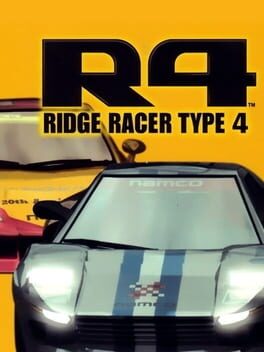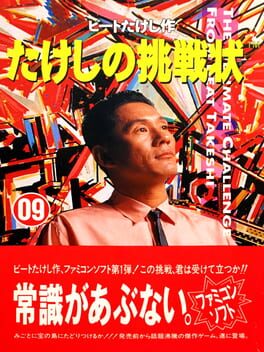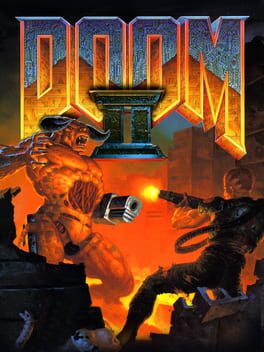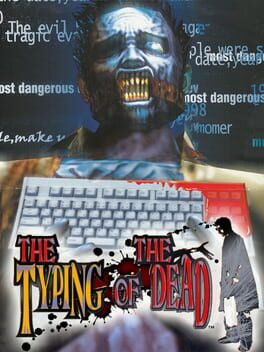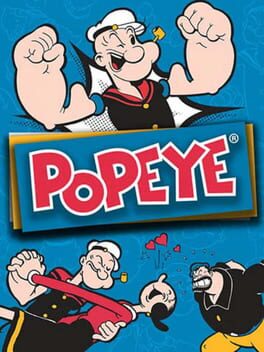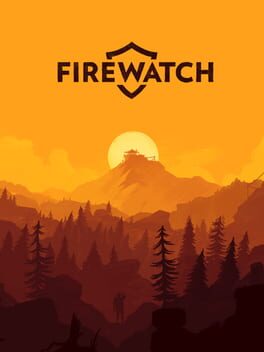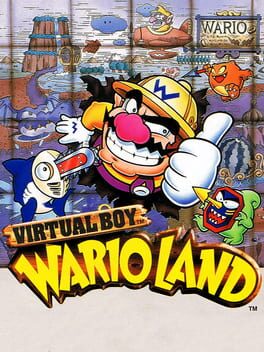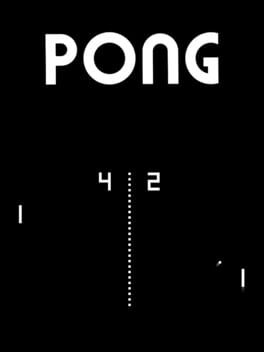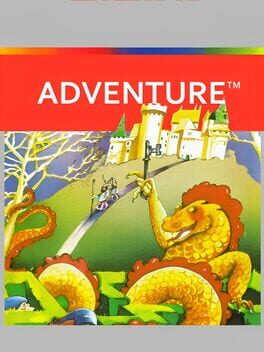psychological
43 Reviews liked by psychological
Ridge Racer Type 4
1998
Can you feel the heat?
When the tires kiss the street
Move into the beat
Ever since I learned about occlusion culling, a technique deftly handled by Naughty Dog with their first PlayStation 1 title, Crash Bandicoot, my appreciation for the more graphically stellar titles for the system was granted a new shade. It helped offer me a frame of reference (granted, of one of the more extreme use cases) for the necessity to obscure unneeded geometry to save what precious few resources the console could afford - as well as giving me something to mull over whenever I play a 3D PS1 game that looks suspiciously good. Much akin to Crash Bandicoot, racing games benefit from what is essentially a densely curated linear track. With limited camera movement, every attainable viewing angle can be accurately poured over by the designers, letting them carefully weigh up exactly how much they can get away with at every meter of game space. This is very apparent in visually stunning racing titles like Wipeout 3, Colin McRae Rally 2.0, and Need for Speed: High Stakes; their tracks are glutted with turns, verticality and obstacles that exist to obscure as much model pop-in as possible, and offer a new piece of visual stimuli at every turn. This has a knock-on effect for how these tracks are actually driven on, too. Track designers are by necessity discouraged from long straightaways where the world noticeably phases into existence, and instead ensure that the player has very little if any downtime from cornering, maintaining a thrilling tempo that only stops when the chequered flag is waved. I say all this, because I really do miss the era where racing games were these hardware-defying explosions of style and skill, with enough big-money backing to allow the designers to let their perfectionism and neuroses get tangled in the engine’s crankshaft. I can only go in a straight line down a massive realistic unreal engine map for so long.
Anyway. Ridge Racer Type 4 is a Swiss watch. One of very, very few games I’d describe as “meticulous”. Every one of its moving parts serves a key purpose in its grand design. Its mechanisms are the result of painstaking consideration for the most minute details. Built to last, and never lose its sheen. The only game my dad likes (real). It all just moves & breathes with this air of confidence and romance, exemplified by the way the penultimate setpiece is the final lap taking place at the exact turn of the millennium - a genuinely affecting gesture to barrel through doubt and seize your future by any means.
One thing I’m particularly taken by is the overall stylistic presentation of Type 4. Among the first things you see upon loading it up are the game’s signature tail/headlight afterglows leaving trails across the screen. The preamble at the start of this review was for no reason other than the fact that R4 actualises the PS1. Its environments use every trick in the book with a healthy serving of incredible models & baked-in textures to make the world feel rich beyond the scope of the road. The game’s UI alone is worth studying for its consistent use of very few colours, empty-space and minimalist decoration (every game needs a "PLEASE" in the corner at all times). In establishing a universe that seemingly exists solely for the purpose of racing fictional cars around the fictional Ridge City, the developers at Namco have populated the series with a mountain of logos, icons, banners, signs, patterns, manufacturers, liveries and colour palettes. They work to establish the curves, hills and tunnels as very real places with a history all their own. How did Wonderhill get its name? Why is it called Shooting Hoops? Where are these places in Ridge City and how do they fit into the Ridge Racer universe?
Look at the Helter Skelter track’s logo, for instance. One of the things I enjoy about this logo is its deceptively simple construction that results in a complex visual illusion of sorts. Essentially, the structure is a series of circles that reduce in size from top to bottom. The circles do not change shape in the slightest, only in scale, and by removing their intersections and filling in some minor spaces to complete the shape, is this illusion achieved. It harkens to the track’s multi-levelled nature, conveying a sense of movement as you rapidly weave through overpasses and underground tunnels w/ the ferocity of a hurricane.
The whole game is like this. A veritable archive of mindful audio, visual and game design, of weapons-grade artistic talent. Beyond aspirational and genuinely medium affirming.
When the tires kiss the street
Move into the beat
Ever since I learned about occlusion culling, a technique deftly handled by Naughty Dog with their first PlayStation 1 title, Crash Bandicoot, my appreciation for the more graphically stellar titles for the system was granted a new shade. It helped offer me a frame of reference (granted, of one of the more extreme use cases) for the necessity to obscure unneeded geometry to save what precious few resources the console could afford - as well as giving me something to mull over whenever I play a 3D PS1 game that looks suspiciously good. Much akin to Crash Bandicoot, racing games benefit from what is essentially a densely curated linear track. With limited camera movement, every attainable viewing angle can be accurately poured over by the designers, letting them carefully weigh up exactly how much they can get away with at every meter of game space. This is very apparent in visually stunning racing titles like Wipeout 3, Colin McRae Rally 2.0, and Need for Speed: High Stakes; their tracks are glutted with turns, verticality and obstacles that exist to obscure as much model pop-in as possible, and offer a new piece of visual stimuli at every turn. This has a knock-on effect for how these tracks are actually driven on, too. Track designers are by necessity discouraged from long straightaways where the world noticeably phases into existence, and instead ensure that the player has very little if any downtime from cornering, maintaining a thrilling tempo that only stops when the chequered flag is waved. I say all this, because I really do miss the era where racing games were these hardware-defying explosions of style and skill, with enough big-money backing to allow the designers to let their perfectionism and neuroses get tangled in the engine’s crankshaft. I can only go in a straight line down a massive realistic unreal engine map for so long.
Anyway. Ridge Racer Type 4 is a Swiss watch. One of very, very few games I’d describe as “meticulous”. Every one of its moving parts serves a key purpose in its grand design. Its mechanisms are the result of painstaking consideration for the most minute details. Built to last, and never lose its sheen. The only game my dad likes (real). It all just moves & breathes with this air of confidence and romance, exemplified by the way the penultimate setpiece is the final lap taking place at the exact turn of the millennium - a genuinely affecting gesture to barrel through doubt and seize your future by any means.
One thing I’m particularly taken by is the overall stylistic presentation of Type 4. Among the first things you see upon loading it up are the game’s signature tail/headlight afterglows leaving trails across the screen. The preamble at the start of this review was for no reason other than the fact that R4 actualises the PS1. Its environments use every trick in the book with a healthy serving of incredible models & baked-in textures to make the world feel rich beyond the scope of the road. The game’s UI alone is worth studying for its consistent use of very few colours, empty-space and minimalist decoration (every game needs a "PLEASE" in the corner at all times). In establishing a universe that seemingly exists solely for the purpose of racing fictional cars around the fictional Ridge City, the developers at Namco have populated the series with a mountain of logos, icons, banners, signs, patterns, manufacturers, liveries and colour palettes. They work to establish the curves, hills and tunnels as very real places with a history all their own. How did Wonderhill get its name? Why is it called Shooting Hoops? Where are these places in Ridge City and how do they fit into the Ridge Racer universe?
Look at the Helter Skelter track’s logo, for instance. One of the things I enjoy about this logo is its deceptively simple construction that results in a complex visual illusion of sorts. Essentially, the structure is a series of circles that reduce in size from top to bottom. The circles do not change shape in the slightest, only in scale, and by removing their intersections and filling in some minor spaces to complete the shape, is this illusion achieved. It harkens to the track’s multi-levelled nature, conveying a sense of movement as you rapidly weave through overpasses and underground tunnels w/ the ferocity of a hurricane.
The whole game is like this. A veritable archive of mindful audio, visual and game design, of weapons-grade artistic talent. Beyond aspirational and genuinely medium affirming.
Super Mario Land
1989
Terrible game. Barely anything about it is functional and it's filled to the brim with half-baked ideas that only exist because Takeshi Kitano was making this game under a mindset of "Oh shit, can I really add this into a game. I'm going to do that. Cool", sort of like how I used to make video games back in High School, but then most of the mechanics in of themselves just don't make any sense whatsoever.
But then it's also strangely memorable in a way if you look beyond the game, and it's just Kitano messing with people with his often dark and insane sense of humour - pretty much where this is just one giant shitpost, and it infamously garnered a reputation as a 'Kusoge' (Japanese for 'Shit Game'). This also acts as a weird bridge between Takeshi Kitano's lighthearted and rambling comedic persona in Takeshi's Castle - to his dark and nihilistic affair with movies such as Violent Cop (1989) and Sonatine (1993).
You don't have to play this game though. Just watch Videogamedunkey's review of it instead. He covers all the bases pretty well:
https://www.youtube.com/watch?v=ZkP-dlAgrsw
But then it's also strangely memorable in a way if you look beyond the game, and it's just Kitano messing with people with his often dark and insane sense of humour - pretty much where this is just one giant shitpost, and it infamously garnered a reputation as a 'Kusoge' (Japanese for 'Shit Game'). This also acts as a weird bridge between Takeshi Kitano's lighthearted and rambling comedic persona in Takeshi's Castle - to his dark and nihilistic affair with movies such as Violent Cop (1989) and Sonatine (1993).
You don't have to play this game though. Just watch Videogamedunkey's review of it instead. He covers all the bases pretty well:
https://www.youtube.com/watch?v=ZkP-dlAgrsw
Doom II
2019
Aaaaaaaaaaa it's so much fun! For one it's great feeling empowered by a skill that rarely gets to feel cool or flashy. Adding this kind of flair to typing is endlessly satisfying along with the gunshots on each key pressed.
The rail shooter underneath all this typing business is silly and overacted enough to be a great time, but the typing adds multiple extra layers which make it an absolutely wild experience. The game totally takes advantage of the disconnect between its rail shooter and typing game elements...while you're frantically hitting keys trying to keep up, what you're actually being prompted to type seeps in, but with no time for you to linger on it. Sometimes the words and phrases are complete nonsense and sometimes they're quotes, but it really shines when they're used to tell little stories between a few prompts. Sometimes it'll make fun of the player, saying if they finish typing that paragraph, they'll be alone for the rest of their lives, and sometimes it's strangely horny. When they aren't nonsense, the prompts are immature fun.
In addition, they do a great job of switching things up and making this more than just a test of typing speed. For instance, there are these quick thinking segments where you have to answer questions instead of just typing what's shown. The player has to constantly consider target priority throughout the game, which is probably what makes it still feel like a rail shooter at the end of the day. This was my biggest downfall, as I often started typing a sentence on an enemy in the back while several in the front would kick my ass. I love this shit.
First game played on my Thinkpad R52! :)
The rail shooter underneath all this typing business is silly and overacted enough to be a great time, but the typing adds multiple extra layers which make it an absolutely wild experience. The game totally takes advantage of the disconnect between its rail shooter and typing game elements...while you're frantically hitting keys trying to keep up, what you're actually being prompted to type seeps in, but with no time for you to linger on it. Sometimes the words and phrases are complete nonsense and sometimes they're quotes, but it really shines when they're used to tell little stories between a few prompts. Sometimes it'll make fun of the player, saying if they finish typing that paragraph, they'll be alone for the rest of their lives, and sometimes it's strangely horny. When they aren't nonsense, the prompts are immature fun.
In addition, they do a great job of switching things up and making this more than just a test of typing speed. For instance, there are these quick thinking segments where you have to answer questions instead of just typing what's shown. The player has to constantly consider target priority throughout the game, which is probably what makes it still feel like a rail shooter at the end of the day. This was my biggest downfall, as I often started typing a sentence on an enemy in the back while several in the front would kick my ass. I love this shit.
First game played on my Thinkpad R52! :)
Faceball 2000
1991
Faceball 2000
1991
You hear your mother and father arguing late one night again. This time, once it's over, they come into your room and tell you that none of what has been going on is your fault. After a few months of not knowing what is going on, you move out with your father to somewhere east in town. When you move into your new house, he offers to rent you any game in the nearest Blockbuster for your Super Nintendo Entertainment System. You see so many choices that entice your brain to the fullest extent of curiosity. You come across Super Mario All Stars + Super Mario World, the three original games for the Nintendo Entertainment System with brand new sixteen bit graphics, and the newest Mario game to date, Super Mario World. Next to it you see Donkey Kong Country, Nintendo's answer to the Gensis's Aladdin. Fully pre-rendered 3D models on the SNES, with the smoothest gameplay you have ever seen. But deep into the trenches of the store, you come across this game. You ask your father for it, and he kindly buys it for you. When you get home, you pop in the game and find your way into a 2 Player game. After a very rough couple of minutes, your father pauses the game. He looks sternly into your eyes and utters a few words. "The divorce was your fault"
Popeye
2021
Firewatch
2016
Ultimately this is hands down one of my favorite narratives across all media. The game plays more like an interactive movie(the core gameplay mechanic is walking from point A to point B) but in a way that's extremely moving. The voice acting is top notch, the art direction holds up fairly well in 2022 and it doesn't overstay it's welcome. If you're at all a fan of indies with a heart of gold, this should be on your backlog. Only downside is limited replayability. For any trophy/achivement hunters out there this is an extremely easy plat.
Super Mario Bros.
1985
Over the course of one stream which lasted an increasingly hellish 3.5 hours, I played Super Mario Bros. to completion with original NES rules: You run out of lives, you restart the entire game.
This is the type of thing that changes a person. A game I previously enjoyed, once played in its original form, became a game that had me questioning whether I even liked games to begin with, beating my head against a wall with increasing rapidity until I either passed out or beat this godforsaken thing.
And yet somehow, I still think I enjoy Mario 1, to an extent. I am not likely to ever play it again, certainly not to completion, and I think the physics are immediately superseded by anything and everything that came after, but there's honestly still some gas in the tank here, and for as hellish as the experience was, it's still a rite of passage I think everyone should do at least once.
This is the type of thing that changes a person. A game I previously enjoyed, once played in its original form, became a game that had me questioning whether I even liked games to begin with, beating my head against a wall with increasing rapidity until I either passed out or beat this godforsaken thing.
And yet somehow, I still think I enjoy Mario 1, to an extent. I am not likely to ever play it again, certainly not to completion, and I think the physics are immediately superseded by anything and everything that came after, but there's honestly still some gas in the tank here, and for as hellish as the experience was, it's still a rite of passage I think everyone should do at least once.
The Legend of Zelda
1986
This game reignited an existential crisis in me that often comes from older games, does using a walkthrough, even for just one small thing, ruin the experience?
With this game I am conflicted, going in completely blind is definitely not recommended, at the very least look up the manual which contains some tips and a partially complete map.
But what about hidden caves? There is no visual or audio indication which parts of the map can be bombed/burned and the only hint is that the old man will give a usless cryptic hint that basically just implies that you should bomb/burn every single bush or wall. Does this feel like adventure? is this exploration? No, not when extremely important items are hidden in these caves, if it was only keys, bombs and rubies in these caves I think it would be fine, but a vital part of the game is behind some random bush.
In this game I would say that to get the intended experience, play for a while exploring naturally, it doesn't take too long to see most of the map, then when you hit a wall, look up what you have missed and then play through the rest of the game with a guide. I got to level 4 and missed level 2 and a massive amount of items in the overworld (some of which were literally essential to continue) but I had seen most of the map, and discovered a few secret areas and items on my own, so I believe I got the intended experience in a few hours, but to see the ending and the rest of the content in the game, a walkthrough was needed.
Anyway the game is incredibly influential and of such high quailty it basically defined what a post-arcade video game is, the dick sucking the Zelda series gets is (mostly) well deserved and despite how comparatively 'not fun' the first entry is by modern standards, this is like criticising the Ford model T by saying it's not as fast as a Ferrari
With this game I am conflicted, going in completely blind is definitely not recommended, at the very least look up the manual which contains some tips and a partially complete map.
But what about hidden caves? There is no visual or audio indication which parts of the map can be bombed/burned and the only hint is that the old man will give a usless cryptic hint that basically just implies that you should bomb/burn every single bush or wall. Does this feel like adventure? is this exploration? No, not when extremely important items are hidden in these caves, if it was only keys, bombs and rubies in these caves I think it would be fine, but a vital part of the game is behind some random bush.
In this game I would say that to get the intended experience, play for a while exploring naturally, it doesn't take too long to see most of the map, then when you hit a wall, look up what you have missed and then play through the rest of the game with a guide. I got to level 4 and missed level 2 and a massive amount of items in the overworld (some of which were literally essential to continue) but I had seen most of the map, and discovered a few secret areas and items on my own, so I believe I got the intended experience in a few hours, but to see the ending and the rest of the content in the game, a walkthrough was needed.
Anyway the game is incredibly influential and of such high quailty it basically defined what a post-arcade video game is, the dick sucking the Zelda series gets is (mostly) well deserved and despite how comparatively 'not fun' the first entry is by modern standards, this is like criticising the Ford model T by saying it's not as fast as a Ferrari
Pong
1972
I am literally a wh*te rectangle.
Anyways. Jokes aside. Pong is such an interesting game. On the surface, it’s just you and the computer playing Ping Pong. You and the computer are moving white objects that can bounce a white square from one side to the other. They can be moved to the adjustment of the controller. You and the computer will go on and on and on until one of you makes a slip and the other gets a point. This keeps going until one of you gets 11 points. Then, the game is over. You must now input another 25 cents, or a quarter, into the Arcade machine so you can play again. It’s so simple. You can even play Pong with a friend. But I don’t think any of us have any real friends in this day and age so that idea is just completely out of the question. And even if you do have any real friends these days, I don’t think they will be willing to be playing a near 50 year old game with you instead of the latest first person shooter or party game. Pong is just a simple game yet so brilliant. Just rating this game is completely unnecessary. It’s just too important. Without it, I wouldn’t be here. You wouldn’t be here. No one would be here. It’s like rating water. That’s how important this computerized version of ping pong is.
Anyways. Jokes aside. Pong is such an interesting game. On the surface, it’s just you and the computer playing Ping Pong. You and the computer are moving white objects that can bounce a white square from one side to the other. They can be moved to the adjustment of the controller. You and the computer will go on and on and on until one of you makes a slip and the other gets a point. This keeps going until one of you gets 11 points. Then, the game is over. You must now input another 25 cents, or a quarter, into the Arcade machine so you can play again. It’s so simple. You can even play Pong with a friend. But I don’t think any of us have any real friends in this day and age so that idea is just completely out of the question. And even if you do have any real friends these days, I don’t think they will be willing to be playing a near 50 year old game with you instead of the latest first person shooter or party game. Pong is just a simple game yet so brilliant. Just rating this game is completely unnecessary. It’s just too important. Without it, I wouldn’t be here. You wouldn’t be here. No one would be here. It’s like rating water. That’s how important this computerized version of ping pong is.
Adventure
1979
My bias is gonna show on this one but I'm not gonna pretend it won't.
Adventure is a game about delving a labyrinth in search of various keys to open various gates to acquire various items to slay various dragons and eventually come back out with the one and only chalice you're in search of.
A perfect score seems crazy for an Atari 2600 game I know, but this game does so much right:
- a series of difficulty levels that up the difficulty by increasing the complexity of the labyrinth and types of enemies rather than some BS thing
- fun and simple gameplay, with various items with various uses if you tinker with them
- well designed enemies (the dragons) that give a sense of dread when they're chasing you, and create extremely exciting and funny moments when they suddenly pop up and come after you
- a hilariously designed nuisance (the bat) who will torment you on higher difficulties by simply flying around, stealing items and swapping them -- he'll even carry a dragon to your current room and drop it, which is utterly hilarious to me.
- good replayability due to item placement being scrambled frequently by the bat
- a high difficulty that's not particularly punishing -- dying simply brings the dragons back to life and resets you to the first room, allowing you to continue playing just as things stood when you died
All in all, Adventure is just fun to play. The idea is great and well executed. It's simple, hilarious, and exhilarating, especially when you're making the mad dash to return the chalice to your base and win the game while hoping that god-forsaken bat won't come and rip it out of your hands and go hide it near a dragon, AGAIN.
I love this game, and it's ESPECIALLY impressive for an Atari 2600 game.
5 - Masterpiece: Either a personal favorite or so good I can't deny it a 5
Adventure is a game about delving a labyrinth in search of various keys to open various gates to acquire various items to slay various dragons and eventually come back out with the one and only chalice you're in search of.
A perfect score seems crazy for an Atari 2600 game I know, but this game does so much right:
- a series of difficulty levels that up the difficulty by increasing the complexity of the labyrinth and types of enemies rather than some BS thing
- fun and simple gameplay, with various items with various uses if you tinker with them
- well designed enemies (the dragons) that give a sense of dread when they're chasing you, and create extremely exciting and funny moments when they suddenly pop up and come after you
- a hilariously designed nuisance (the bat) who will torment you on higher difficulties by simply flying around, stealing items and swapping them -- he'll even carry a dragon to your current room and drop it, which is utterly hilarious to me.
- good replayability due to item placement being scrambled frequently by the bat
- a high difficulty that's not particularly punishing -- dying simply brings the dragons back to life and resets you to the first room, allowing you to continue playing just as things stood when you died
All in all, Adventure is just fun to play. The idea is great and well executed. It's simple, hilarious, and exhilarating, especially when you're making the mad dash to return the chalice to your base and win the game while hoping that god-forsaken bat won't come and rip it out of your hands and go hide it near a dragon, AGAIN.
I love this game, and it's ESPECIALLY impressive for an Atari 2600 game.
5 - Masterpiece: Either a personal favorite or so good I can't deny it a 5
